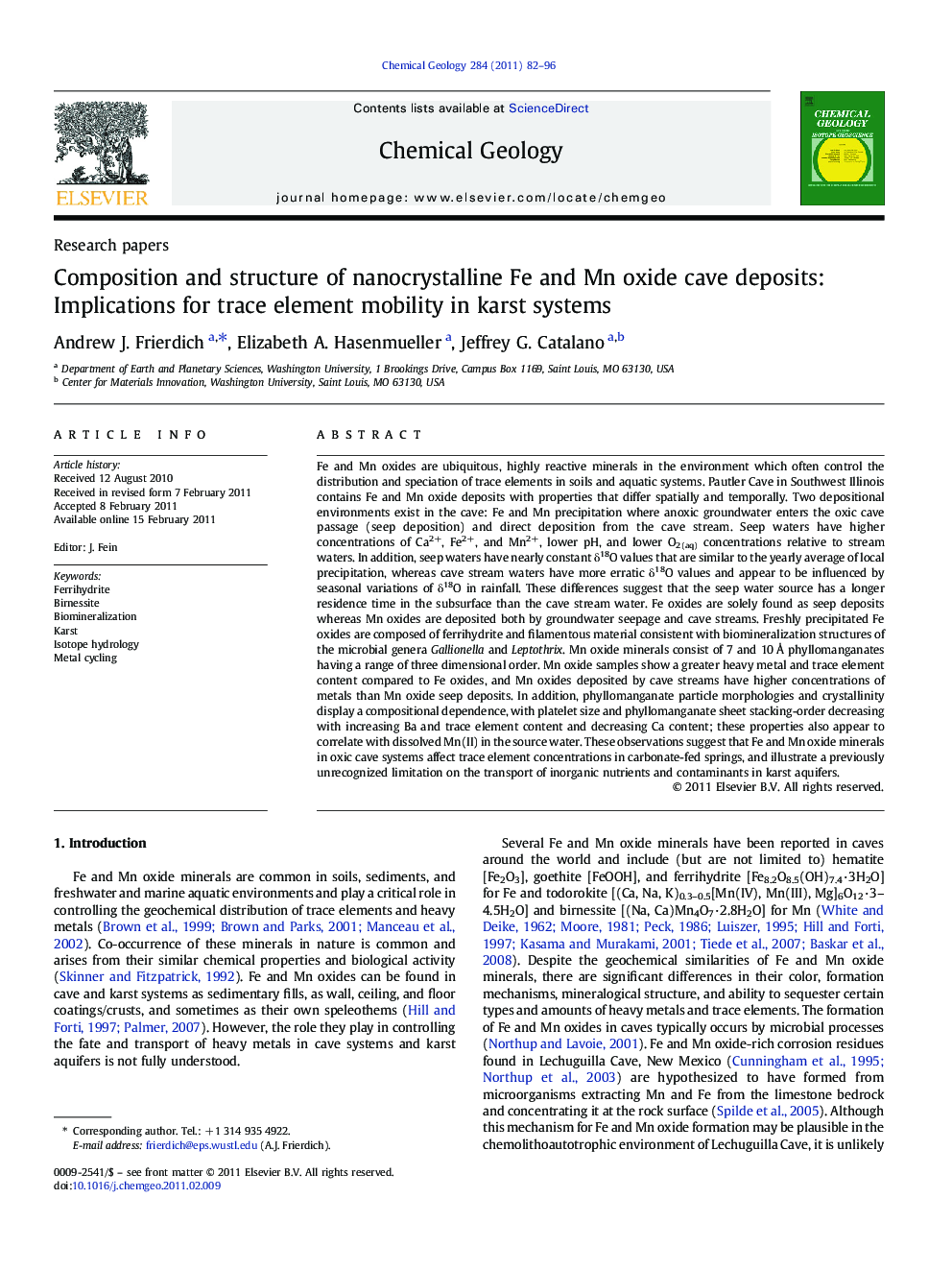| Article ID | Journal | Published Year | Pages | File Type |
|---|---|---|---|---|
| 4699720 | Chemical Geology | 2011 | 15 Pages |
Fe and Mn oxides are ubiquitous, highly reactive minerals in the environment which often control the distribution and speciation of trace elements in soils and aquatic systems. Pautler Cave in Southwest Illinois contains Fe and Mn oxide deposits with properties that differ spatially and temporally. Two depositional environments exist in the cave: Fe and Mn precipitation where anoxic groundwater enters the oxic cave passage (seep deposition) and direct deposition from the cave stream. Seep waters have higher concentrations of Ca2+, Fe2+, and Mn2+, lower pH, and lower O2(aq) concentrations relative to stream waters. In addition, seep waters have nearly constant δ18O values that are similar to the yearly average of local precipitation, whereas cave stream waters have more erratic δ18O values and appear to be influenced by seasonal variations of δ18O in rainfall. These differences suggest that the seep water source has a longer residence time in the subsurface than the cave stream water. Fe oxides are solely found as seep deposits whereas Mn oxides are deposited both by groundwater seepage and cave streams. Freshly precipitated Fe oxides are composed of ferrihydrite and filamentous material consistent with biomineralization structures of the microbial genera Gallionella and Leptothrix. Mn oxide minerals consist of 7 and 10 Å phyllomanganates having a range of three dimensional order. Mn oxide samples show a greater heavy metal and trace element content compared to Fe oxides, and Mn oxides deposited by cave streams have higher concentrations of metals than Mn oxide seep deposits. In addition, phyllomanganate particle morphologies and crystallinity display a compositional dependence, with platelet size and phyllomanganate sheet stacking-order decreasing with increasing Ba and trace element content and decreasing Ca content; these properties also appear to correlate with dissolved Mn(II) in the source water. These observations suggest that Fe and Mn oxide minerals in oxic cave systems affect trace element concentrations in carbonate-fed springs, and illustrate a previously unrecognized limitation on the transport of inorganic nutrients and contaminants in karst aquifers.
Research highlights►Fe and Mn oxides are deposited by seeps and streams in Pautler Cave, Illinois, USA. ►Mn oxides deposited by cave streams contain the highest trace element contents. ►Phyllomanganate crystallinity and metal uptake are affected by Mn(II). ►Fe and Mn oxides control the fate of trace elements in the shallow karst aquifer.
